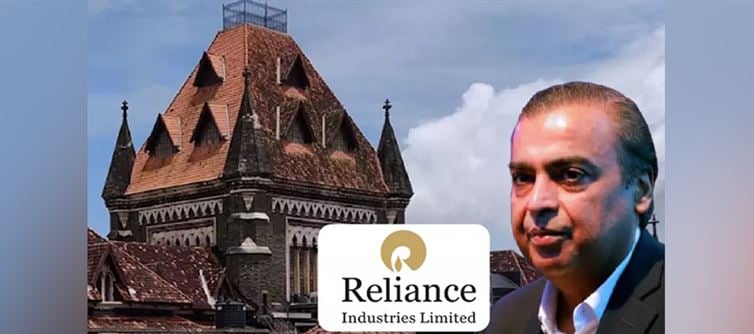
🧨THE ALLEGATION THAT SHOULDN’T BE IGNORED
Imagine someone siphons off over USD 1.55 billion worth of natural resources from the state-owned company, hides it for a decade, benefits massively, and the system only now opens its eyes. That’s the claim facing reliance Industries and its directors, including mukesh Ambani.
On 4 november 2025, the bombay HC issued notices to the Central Bureau of Investigation (CBI) and the oil and Natural Gas Corporation (ONGC)-respondent union, after a petition alleged RIL drilled sideways into ONGC wells in the krishna Godavari Basin and lifted gas illegally.
This is not a run-of-the-mill corporate dispute. It’s potentially one of the largest resource theft allegations in recent indian corporate history.
🔍 THE CORE ALLEGATIONS: WHAT IS RIL ACCUSED OF?
The petition (filed by Jitendra P. Maru) claims that between 2004 and 2013-14, RIL drilled deep-sea wells in the krishna Godavari Basin and tapped into adjacent ONGC wells, extracting natural gas belonging to ONGC.
An independent investigation (by De Golyer & MacNaughton) and the A P Shah Committee reportedly found the extraction unauthorised and quantified the theft at over USD 1.55 billion (with interest ~USD 174.9 million) according to the petition.
RIL’s defence: the gas was “migratory” and thus claimed rights to extract it.
The delhi High court has already set aside an arbitral award favourable to RIL, stating that the award was against public policy.
These are serious claims: theft, dishonest misappropriation, breach of trust, and claims of organised fraud.
🏛 WHAT THE court HAS DONE SO FAR
On 4 november 2025, bombay HC (bench of Justices A.S. Gadkari & Ranjitsinha raja Bhonsale) issued notices to the cbi and the Union of india on the plea seeking a cbi probe.
Next hearing is set for 18 november 2025.
Significance: While RIL and its directors are named in the petition, the initial notice is to respondents (CBI/UoI). The court hasn’t yet directed registration of a criminal case, but the stage is set for one if the petition succeeds.
💼 WHY THIS MATTERS: STAKES, POWER & PRECEDENT
Resource value: USD 1.55 billion is a huge sum. For context, this could affect national revenue, offshore resource governance, contract integrity, and investor trust.
Corporate power: RIL is India’s largest private conglomerate; mukesh ambani is one of the most powerful business figures. A criminal investigation into RIL would send shock-waves across indian corporates.
Governance and enforcement: The petition underscores gaps in resource allocation, monitoring of offshore extraction, and state-enterprise accountability.
Precedent: If the court orders a cbi probe and a criminal case ensues, it sets a precedent that even mega-corporates can face criminal sanction for resource theft claims — not just civil/arbitral disputes.
Market & reputation: Despite the notice, RIL’s stock did not crash immediately — pointing to either market confidence, or the belief this might drag on. But the reputational risk is real.
📉 MARKET BEHAVIOUR VS. REAL RISK
As of 12 november 2025, RIL’s stock closed at ₹1,511.50 – up ~1.19% on that day, and up ~1.8% over the past three days.
Why no panic? Possible reasons:
The notice is preliminary — no case yet.
Markets may believe RIL will defend strongly.
Larger controversies often drag on; investors may be discounting the risk.
But markets can surprise — if the court orders a full probe, or the cbi acts, this could become a systemic risk marker.
🧠 QUESTIONS THAT MUST BE ASKED
Why did it take almost a decade (the alleged extraction is 2004-14) for such a petition to be heard?
How did offshore regulatory oversight, contract monitoring, and audit fail or allow such massive alleged extraction?
What of RIL’s defence of “migratory gas” — how strong is that scientifically and legally?
If the case expands into criminal territory, will the personal liability of directors (including Ambani) be directly tested?
What will this mean for India’s offshore contracts, investor confidence, and regulatory maps for natural resources?
🚨 POTENTIAL SCENARIOS & IMPLICATIONS
Scenario A: court directs cbi probe → criminal case registered → large-scale investigation → if proven, huge liabilities for RIL, potential penalties, reputational damage.
Scenario B: court rejects probe or limits to civil/arbitral route → RIL emerges comparatively unscathed → message weaker for accountability.
Scenario C: Partial probe → settlement/plea-bargain → precedent weak, risk remains for future resource scandals.
Each scenario carries implications for business, governance, politics, and markets.
🔚 A TURNING POINT IN indian corporate ACCOUNTABILITY
The bombay HC notice is more than just a headline. It could become a watershed moment in indian corporate governance.
If a mega-corporate like RIL faces serious criminal scrutiny for resource theft, the rules of the game change.
If this fizzles out quietly, the message remains that power shields large players.
Either way, the system is being tested.
Indian legal enforcement, corporate accountability, and regulatory integrity—all are on show.
And for investors, regulators, and citizens, the moment to watch is 18 November.
Note: This article is based on publicly reported claims and petitions; the allegations are contested, and RIL’s legal defence remains active.




 click and follow Indiaherald WhatsApp channel
click and follow Indiaherald WhatsApp channel